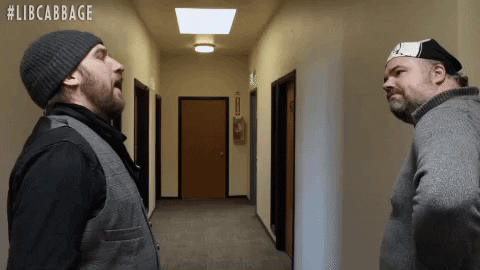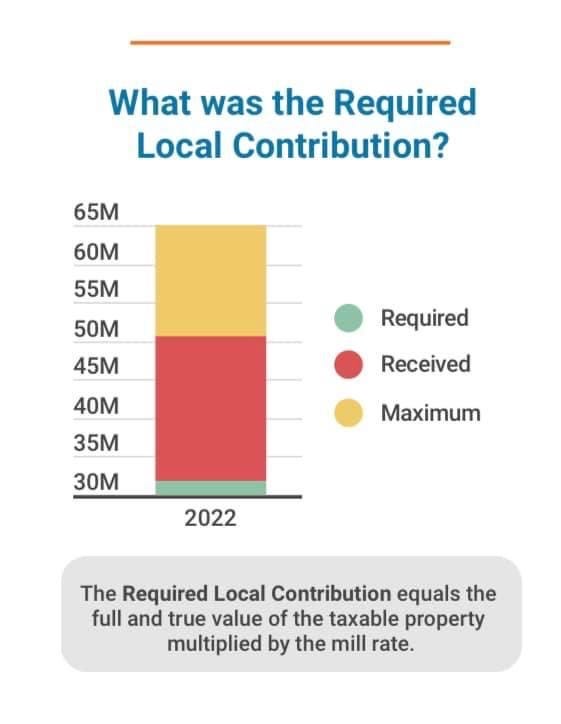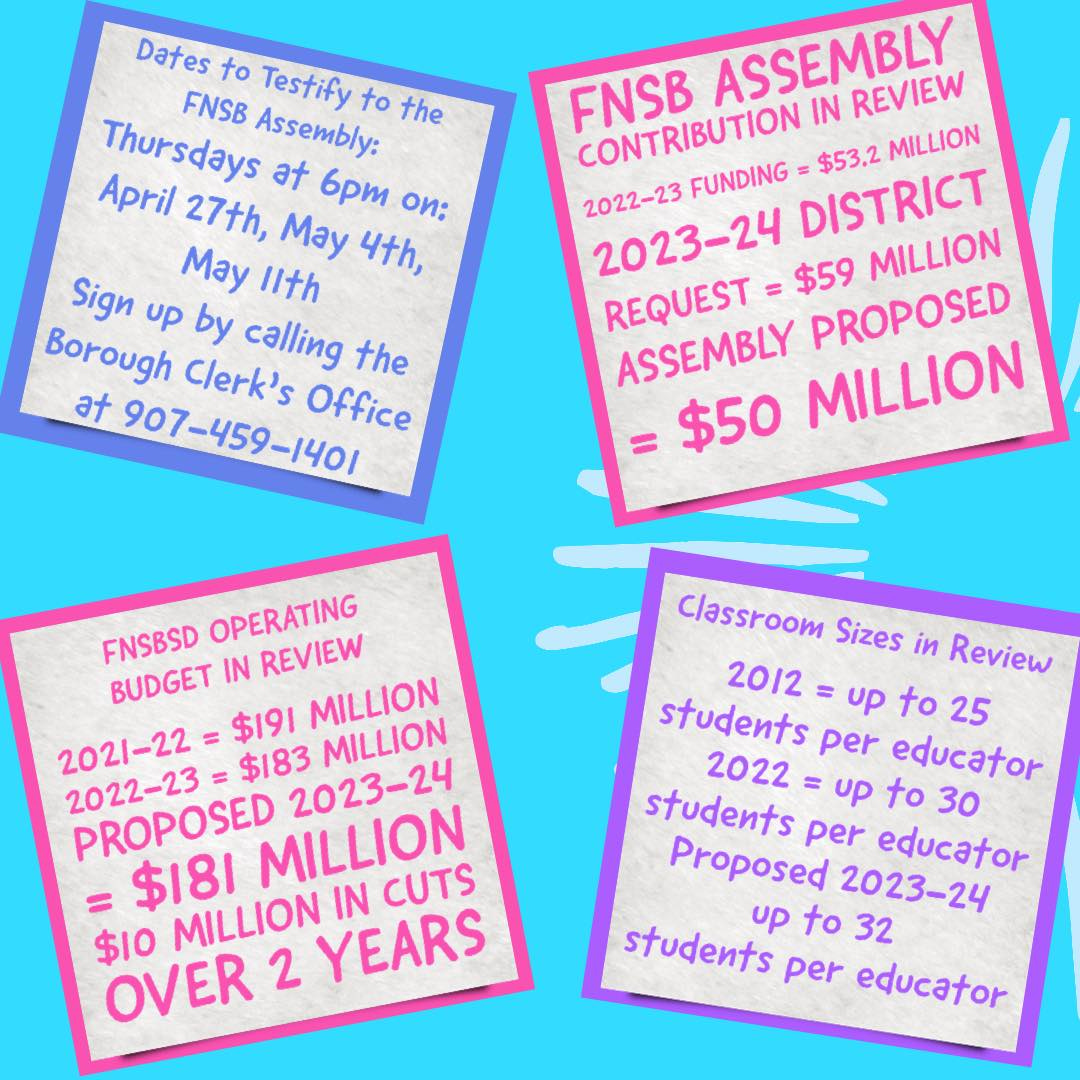Cutting Funding to Fairbanks Schools
I generally disagree with the idea of “the good old days”.
Public education funding in Alaska is an exception.
I was a product of our public schools and I think I (generally) received an excellent education.
Now, as less-sure oil money makes budgets more complicated, many Alaskan leaders - from the state to the local level - seem unwilling to appropriately fund public education.
On Monday, I talked a little bit about at the Fairbanks North Star Borough (FNSB) Assembly proposing to cut the local contribution to our public schools.
Here’s more on that, and an update on other items up for discussion in front of the Assembly.
As recently as 2018, the Fairbanks North Star Borough School District had budgetary reserves of around $34 million dollars.
The money was to protect against long-term revenue decline and perpetually rising costs.
The Borough Assembly, Mayors office, and Board of Education held a joint meeting on November 5, 2018. A room filled with fresh faces, including three newly elected assembly members, two recently appointed school board members, a newly elected mayor, and a new chief operating officer for the school district, agreed to spend down the reserves.
This ultimately included giving the Borough back over $7 million dollars to repair roofs on two public schools (which the Borough owns, and is responsible for the maintenance of).
Here is a link to the recording of that meeting, and the agenda (and presentation from the School Board) is available here.
Part of this agreement was an understanding that if the School Board were to spend down these funds, the Assembly would be willing to step in when times got tough and state funding suffered, and help cover the district’s costs.
Even though there’s significant overlap between the governing bodies now and then (current Assembly Presiding Officer Aaron Lojewski can be heard chiming in 11 minutes into that 2018 work session), it seems like the Assembly is no longer willing to honor their agreement.
The number that came out of the first budgetary work session this year was an allocation of about $50 million towards public education in our community for the upcoming year….which falls $9 million short of the budget recommended by the district as necessary (and a budget that would still lead to larger class sizes, no increase in pay for educators, less support staff, and more).
Essentially, the FNSB Assembly is hoping that the state will step in with a large* increase in its funding for schools: funding that’s less than certain, and could* not be a large enough increase to make up the difference.
*Corrections!
From The Alaska Memo by Matt Buxton :
The FNSB has a tax cap formula in place to reign in spending: we are nowhere near it.
The FNSB is one of the few Borough Assemblies that does not fund public education to the maximum local contribution.
The below image is from the 2022 FNSBSD’s audit report.
We could (and should) better fund public education.
The assembly will be engaged in deliberations regarding the local contribution to education funding (and the rest of the budget) through mid March.
You can follow this well-run Facebook event for more information, updates, and other resources around local education funding, and I hope you get a chance to testify in the coming weeks (including today!).
Other Items In Front of the FNSB Assembly
While you’re there advocating for public education, a couple of other issues could also use your testimony.
Eric Troyer wrote a pair of great pieces about the potential Steese Expressway trail underpass: this would connect trail systems in our community and be greatly convenient. The tunnel was missing from a certain DOT document, but appears to still be planned.
From Eric Troyer:
According to Assemblymember Aaron Lojewski, he and Assemblymembers Kristan Kelly and Savannah Fletcher are working on a resolution to emphasize that the Assembly still wants the tunnel. The Assembly passed a RESOLUTION in support of the tunnel in 2021. The new resolution will be introduced at Thursday’s meeting. My original POST has information on how you can let the Assembly know you support this project.
You can read Eric’s original post and his more recent update for more info.
I would also add that I’ve heard of a houseless population that lives in the area: DOT plans include…dispersing these people. The Borough does not have this power, so I believe the City would need to step in.
The details of how that’s done matters. Will keep an eye on that: I’m not sure there’s currently much of a plan.
Finally, there’s the potential permant closure of Mary Siah. Like in past years, it’s again on the budgetary chopping block.
While it’s where I learned to swim, serves our community well, and is a place I have many fond memories of, I can understand the mounting costs of preventative maintenance becoming too great.
However, it shouldn’t be closed without a plan to replace the services it provides.
There’s nowhere else in town quite like it, and while that’s the case, I believe we should work towards keeping it open.
All this and more is happening at tonight’s Borough Assembly Meeting at the Mona Lisa Drexler Assembly Chambers, Juanita Helms Administration Center, 907 Terminal Street, Fairbanks, AK.
Meeting agenda: https://fnsb.portal.civicclerk.com/event/4646/overview
Regular Assembly Meeting on April 27, 2023 at 6:00 p.m.
Webinar ID: 160 747 1109
Passcode: 025706
Telephone: 646 828 7666 or 833 568 8864 (Toll Free)
Thanks for reading and have a good rest of your day.





Incredibly sad to hear of Fairbanks leaders unwilling to at least attempt to properly fund education! On the other hand it sounds like an increase in the BSA of at least $500 is likely to come out of the legislature. FNSBSD’s adjusted ADM is in the neighborhood of 25,000 which would result in roughly $12.5 million in additional state funding. It remains to be seen whether that BSA increase will be permanent or “one time.”
Hello Kuba - I think its misinformed to say the borough leaders do not support local education just because they are reluctant to fund it at a higher level each year. The biggest factor driving the education funding is school enrollment, which has been falling for a number of years and will continue to fall. The response from District leaders needs to focus on raising revenue and cutting costs rather than the easy (lazy, even) ask for exactly what came before plus inflation.
Raising Revenue: Recapture market share from the homeschools that enrolled hundreds of our students during the pandemic, many of whom never came back to us. The established homeschools were able to ramp up quickly because the model, systems and infrastructure were there and they could add teachers fast to increase capacity. Yukon Koyukuk School district's Raven homeschool (one of the best, if not the best, homeschools in the State) went from 1,689 students as of October 1, 2018 r to 2,707 as of October 1, 2022. Not all of Raven's gain was from FNSBSD students, of course. But given, in my opinion, the District's timorous outreach and lackluster program offerings, the other homeschools ate our lunch. And continue to do so at a cost of about $4,500 per student from the State plus the local contribution.
Have a Fiscal Plan That Balances Income to Expenditures And Maintains Excellence: Easy to say but here's some ideas that can do just that. (Cue howls of rage) . **Outsource (contract) many of the arts programs to local arts organizations, using our schools' classrooms, theaters and art rooms. Average teacher plus benefits $145,000 per year for 6 periods a day; I think local arts people/organizations would be willing to do the arts for this amount. Plus we don't need to lose 10 days a year to professional development, or non-teaching time at the end of every semester for teachers to get in their grades, plus 3 days personal leave, plus sick days, etc, you get the gist. And plus plus you get specialists with expertise beyond what we offer now -more content, more expert content, more choice, etc. **Move to a 7 period day at the high school, meaning less teachers needed while all course offerings maintained. **Move to a trimester system at the high school of three semesters with five courses each, which allows for a possible total of 15 credits a student can earn vs. the 12 now. **Capture expensive teacher instructional time that is lost to such things as end-of-quarter/end-of-semester exams, where students who have no exams that day are not required to attend classes. **Increase the number of competitive grants awarded to the district to fund new programs and initiatives. The District's track record on competitive grants is pathetic when compared to other urban Districts, such as Anchorage.
OK, Kuba, there you have another take on school funding with some concrete ideas for the School Board and top administrators to work on. Mayor Ward and most of the assembly support our schools and want to give more. But it would be nice if they demonstrated to the Mayor and others what efforts the District is making to reduce costs at the same time they preserve programs. Can be done. Doug Crevensten